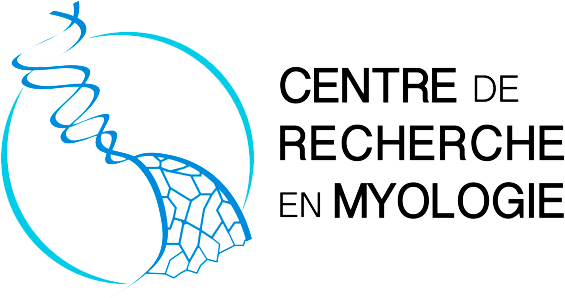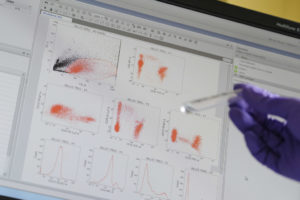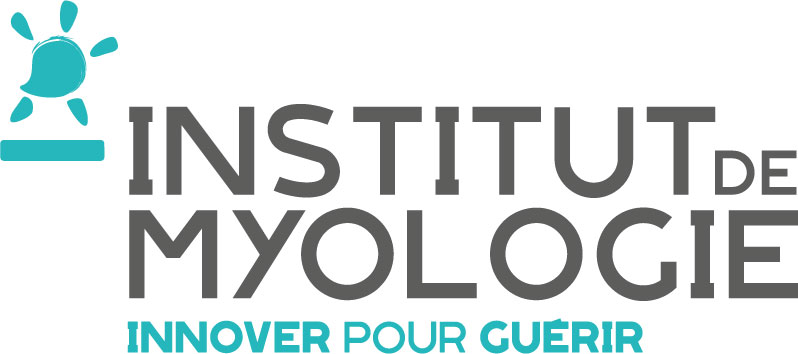Muscle cell organization and therapy of dominant centronuclear myopathy
Muscle cell organization and therapy of dominant centronuclear myopathy
Strengthening knowledge on fundamental aspects of muscle biology is one central challenge in order to decipher pathomechanisms and identify targets for therapeutic intervention for neuromuscular disorders. This is particularly true for diseases due to mutations in genes encoding proteins with pleiotropic roles such as autosomal dominant centronuclear myopathy (CNM) due to mutation of the ubiquitously expressed Dynamin 2 (DMN2) involved in endocytosis, intracellular membrane trafficking and cytoskeleton regulation. In this context, the objectives of the team are: i) to dissect fundamental mechanisms of muscle cells, relevant to understand the dominant CNM, and beyond, numerous other neuromuscular disorders, and ii) to develop experimental therapies for the dominant CNM and study the adeno-associated virus (AAV) vectors fate in pathological muscles to optimize AAV-mediated therapies for neuromuscular disorders. With these objectives, we are developing several projects:
– Role of the endocytosis machinery in mechanobiology at the costameres in healthy and pathological muscles with a particular focus on its adhesive properties and the interplay with mechanosensitive pathways. We also want to better understand how alternative splicing events of the endocytosis machinery cooperates, upon differentiation, to govern clathrin structural diversity (Stéphane Vassilopoulos).
– Role of mechanical stress in muscle homeostasis and growth under physiological and pathological conditions, with a particular focus on the force-mediated regulation of plasma membrane and nuclear stiffness and deformations, chromatin and histone modifications, and genetic programs in muscle cells. We also want to determine how muscle differentiation impacts nuclear characteristics (Catherine Coirault).
– The cellular and molecular mechanisms involved in ventilation-induced diaphragm dysfunction in particular during aging, and the muscle dysfunction occurring in patients in intensive care unit (Catherine Coirault and Adrien Bouglé).
– By combining genetic modifications, live imaging, biophysics, cellular and animal models, we aim at deciphering the pivotal influence of the nucleo-cytoskeleton connection on cell phenotype and genome organization in particular in the context of muscle formation and cardiomyopathy (Bruno Cadot).
– Preclinical development of the allele-specific silencing therapy for the dominant CNM and other DNM2-linked diseases and first proof of concept of allele-specific therapy for other dominant diseases. In addition, we want to develop pharmacological therapy for the DNM2-linked CNM patients (Delphine Trochet & Marc Bitoun).
– In order to optimize AAV-based therapies, we want to identify cellular factors impacting the efficiency of AAV-mediated transduction in diseased muscles. We are focusing on mechanisms regulating the AAV intracellular trafficking and to improve AAV-mediated therapies in DMD and CNM animal models by pharmacological co-treatments (Sofia Benkhelifa-Ziyyat).
Team members:
- Marc Bitoun. Research Director INSERM, co-team leader
- Stéphane Vassilopoulos. Research Director INSERM, co-team leader
- Catherine Coirault. Research Director INSERM
- Delphine Trochet. Research scientist Association Institut de Myologie
- Sofia Benkhelifa-Ziyyat. Research scientist Association Institut de Myologie
- Bruno Cadot. Research scientist Association Institut de Myologie
- Bernard Prudhon. Research Assistant Association Institut de Myologie
- Lylia Mekzine. Research associate INSERM
- Marion Benoist. PhD Student Sorbonne University. Email:
- Kevin Milliet. Master student.
- Ines Akrouf. PhD Student Sorbonne University. Email :
- Joana Martins. PhD Student Sorbonne University. Email :
- Satish Moparthi. Post doc. Email :
- Marine Dumas. Research Assistant AIM. Email :
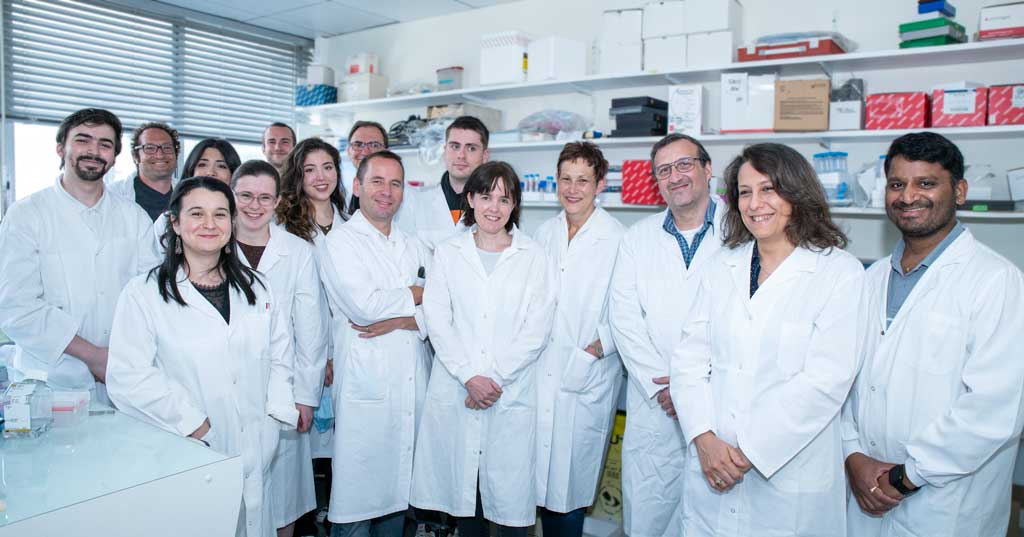
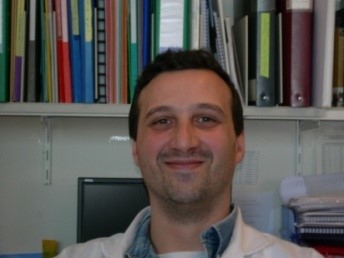
Contact:
| Name | Position | ORCID |
|---|
- Voahangy Randrianarison-Huetz, Aikaterini Papaefthymiou, Gaelle Herledan, Chiara Noviello, Ulduz Faradova, et al.. Srf controls satellite cell fusion through the maintenance of actin architecture. Journal of Cell Biology, 2018, 217 (2), pp.685-700. ⟨10.1083/jcb.201705130⟩. ⟨hal-02397529⟩
- Jean-François Darrigrand. Dullard, a phosphatase at the Heart of Outflow tract development and BMP pathway regulation. ESC Working Group: Marseille Cardiovascular Development meeting, 2018, Marseille, France. ⟨hal-03933559⟩
- Julie Chassagne, Laura Julien, Cécile Peccate, Stéphanie Lorain, France Piétri-Rouxel, et al.. RFX1 and RFX3 Transcription Factors Interact with the D Sequence of Adeno-Associated Virus Inverted Terminal Repeat and Regulate AAV Transduction. European Society of Gene and Cell Therapy, 2018, Lausanne, Switzerland. 2018. ⟨hal-03968317⟩
- Delphine Trochet, Bernard Prudhon, Maud Beuvin, Cécile Peccate, Stéphanie Lorain, et al.. Allele‐specific silencing therapy for Dynamin 2‐related dominant centronuclear myopathy. EMBO Molecular Medicine, 2018, 10 (2), pp.239-253. ⟨10.15252/emmm.201707988⟩. ⟨hal-02000303⟩
- Cadot Bruno. The nuclear-cytoskeleton connection and nuclear positioning during muscle formation. Congress of the World Muscle Society, 2018, Mendoza, Argentina. ⟨hal-03933548⟩
- Jean-François Darrigrand. Dullard, a phosphatase at the Heart of Outflow tract development and BMP pathway regulation. EMBO Imaging Mouse development, EMBL, 2018, Heidelberg, Germany. ⟨hal-03933563⟩
- Suzie Buono, Jacob Ross, Hichem Tasfaout, Yotam Levy, Christine Kretz, et al.. Reducing dynamin 2 (DNM2) rescues DNM2-related dominant centronuclear myopathy. Proceedings of the National Academy of Sciences of the United States of America, 2018, 115 (43), pp.11066-11071. ⟨10.1073/pnas.1808170115⟩. ⟨hal-03671918⟩
- Laura Julien, Julie Chassagne, Cécile Peccate, Stéphanie Lorain, France Pietri-Rouxel, et al.. RFX1 and RFX3 Transcription Factors Interact with the D Sequence of Adeno-Associated Virus Inverted Terminal Repeat and Regulate AAV Transduction. Scientific Reports, 2018, 8 (1), pp.210. ⟨10.1038/s41598-017-18604-3⟩. ⟨hal-02382992⟩
- Candice Kutchukian, Peter Szentesi, Bruno Allard, Delphine Trochet, Maud Beuvin, et al.. Impaired excitation-contraction coupling in muscle fibres from the dynamin2 R465W mouse model of centronuclear myopathy. The Journal of Physiology, 2017, 595 (24), pp.7369-7382. ⟨10.1113/JP274990⟩. ⟨hal-03819840⟩
- Cadot Bruno. Nuclear positioning: A matter of life. Seminars in Cell and Developmental Biology, 2017, ⟨10.1016/j.semcdb.2017.11.034⟩. ⟨hal-01700968⟩
